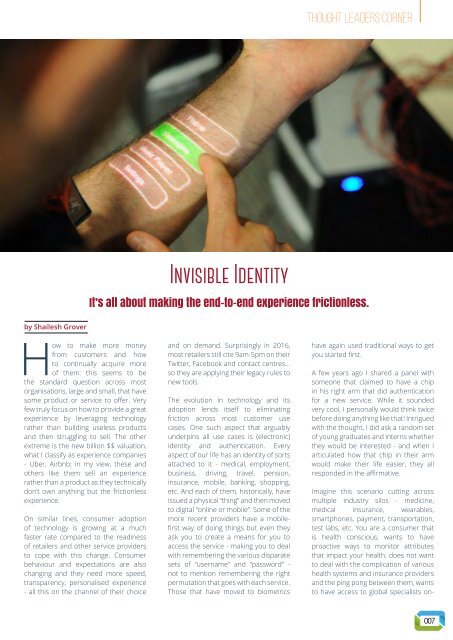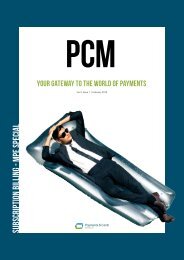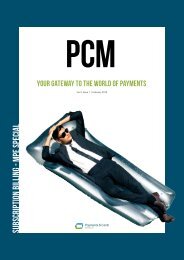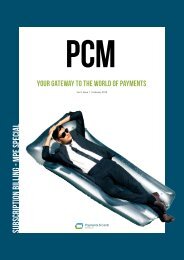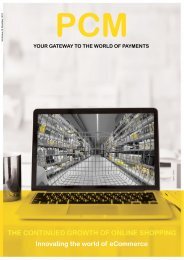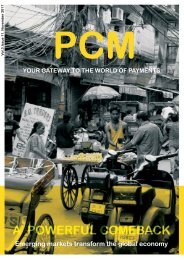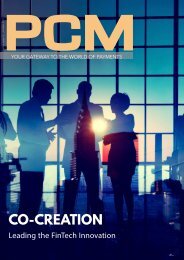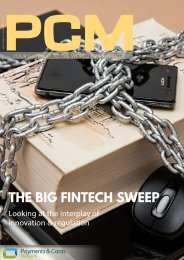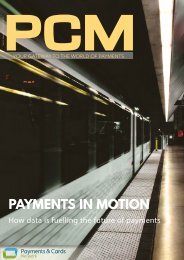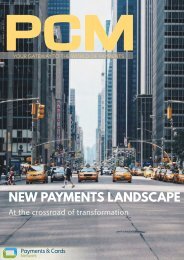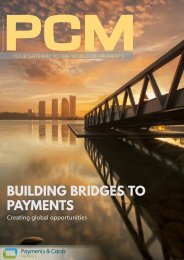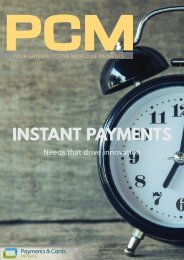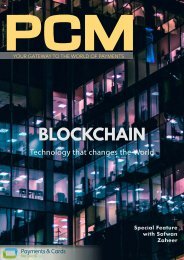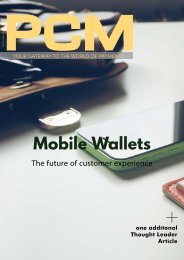PCM Vol.2 - Issue 10
Create successful ePaper yourself
Turn your PDF publications into a flip-book with our unique Google optimized e-Paper software.
Thought Leaders Corner<br />
Invisible Identity<br />
It’s all about making the end-to-end experience frictionless.<br />
Imagine this scenario cutting across<br />
multiple industry silos - medicine,<br />
medical insurance, wearables,<br />
smartphones, payment, transportation,<br />
test labs, etc. You are a consumer that<br />
is health conscious, wants to have<br />
proactive ways to monitor attributes<br />
that impact your health, does not want<br />
to deal with the complication of various<br />
health systems and insurance providers<br />
and the ping pong between them, wants<br />
to have access to global specialists onby<br />
Shailesh Grover<br />
How to make more money<br />
from customers and how<br />
to continually acquire more<br />
of them: this seems to be<br />
the standard question across most<br />
organisations, large and small, that have<br />
some product or service to offer. Very<br />
few truly focus on how to provide a great<br />
experience by leveraging technology<br />
rather than building useless products<br />
and then struggling to sell. The other<br />
extreme is the new billion $$ valuation,<br />
what I classify as experience companies<br />
- Uber, Airbnb; in my view, these and<br />
others like them sell an experience<br />
rather than a product as they technically<br />
don’t own anything but the frictionless<br />
experience.<br />
On similar lines, consumer adoption<br />
of technology is growing at a much<br />
faster rate compared to the readiness<br />
of retailers and other service providers<br />
to cope with this change. Consumer<br />
behaviour and expectations are also<br />
changing and they need more speed,<br />
transparency, personalised experience<br />
- all this on the channel of their choice<br />
and on demand. Surprisingly in 2016,<br />
most retailers still cite 9am-5pm on their<br />
Twitter, Facebook and contact centres…<br />
so they are applying their legacy rules to<br />
new tools.<br />
The evolution in technology and its<br />
adoption lends itself to eliminating<br />
friction across most customer use<br />
cases. One such aspect that arguably<br />
underpins all use cases is (electronic)<br />
identity and authentication. Every<br />
aspect of our life has an identity of sorts<br />
attached to it - medical, employment,<br />
business, driving, travel, pension,<br />
insurance, mobile, banking, shopping,<br />
etc. And each of them, historically, have<br />
issued a physical “thing” and then moved<br />
to digital “online or mobile”. Some of the<br />
more recent providers have a mobilefirst<br />
way of doing things but even they<br />
ask you to create a means for you to<br />
access the service - making you to deal<br />
with remembering the various disparate<br />
sets of “username” and “password” -<br />
not to mention remembering the right<br />
permutation that goes with each service.<br />
Those that have moved to biometrics<br />
have again used traditional ways to get<br />
you started first.<br />
A few years ago I shared a panel with<br />
someone that claimed to have a chip<br />
in his right arm that did authentication<br />
for a new service. While it sounded<br />
very cool, I personally would think twice<br />
before doing anything like that! Intrigued<br />
with the thought, I did ask a random set<br />
of young graduates and interns whether<br />
they would be interested - and when I<br />
articulated how that chip in their arm<br />
would make their life easier, they all<br />
responded in the affirmative.<br />
007


